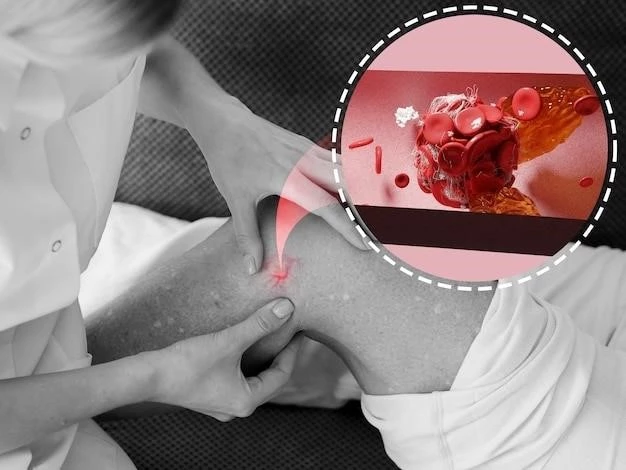Introduction to Primary Ciliary Dyskinesia (PCD)
Primary Ciliary Dyskinesia (PCD) is an inherited disorder that impairs motile cilia‚ essential for respiratory health‚ with a reported prevalence of 1 in 16‚309 within Hispanic populations.
Definition and Prevalence
Primary ciliary dyskinesia (PCD) is a rare autosomal-recessive disorder impacting motile cilia function‚ leading to various manifestations in respiratory health and other organs. The prevalence of PCD is estimated to be 1 in 16‚309 within certain populations‚ with specific genetic mutations contributing to the condition’s pathophysiology.

Clinical Features of PCD
Primary ciliary dyskinesia (PCD) is a rare‚ mainly respiratory‚ ciliopathy that is characterized by recurrent upper and lower respiratory tract infections due to abnormal function of the cilia lining the respiratory epithelium.
Manifestations in Respiratory System
Primary Ciliary Dyskinesia (PCD) predominantly affects the respiratory system‚ leading to chronic lung disease‚ recurrent upper and lower respiratory infections‚ and bronchiectasis. Additional manifestations include sinusitis‚ ear infections‚ and issues with mucociliary clearance. PCD patients often present with respiratory distress and nasal symptoms from an early age.
Associated Organ Laterality Defects
Primary ciliary dyskinesia (PCD) is linked to organ laterality defects‚ often presenting as situs inversus‚ in approximately 50% of cases. This condition affects the positioning of internal organs‚ such as the heart and liver‚ due to abnormalities in ciliary motility during development.
Genetic Basis of PCD
Primary ciliary dyskinesia (PCD) is an inherited disorder caused by genetic mutations affecting the motile cilia‚ particularly genes like DNAI1 and DNAH5‚ crucial for ciliary function.
Mode of Inheritance
The Primary Ciliary Dyskinesia (PCD) is primarily inherited in an autosomal recessive manner‚ with genetic mutations affecting cilia function passed on from both parents. Key genes like DNAI1 and DNAH5 play crucial roles in the development of PCD‚ contributing to its hereditary nature.
Implicated Genes
Genetic mutations in specific genes such as DNAI1 and DNAH5 are implicated in the pathogenesis of Primary Ciliary Dyskinesia (PCD)‚ leading to abnormalities in ciliary structure and function. These genes play vital roles in ciliary motility and are crucial for maintaining respiratory health and other organ functions.
Diagnosis and Management of PCD
Primary ciliary dyskinesia (PCD) requires a thorough diagnostic process involving nasal nitric oxide measurement‚ high-speed video microscopy‚ transmission electron microscopy‚ genetic testing‚ and ciliary motion analysis. Management strategies include airway clearance techniques‚ antibiotic therapy‚ and possibly lung transplant in severe cases.
Diagnostic Methods
Diagnosing Primary Ciliary Dyskinesia (PCD) involves various methods such as nasal nitric oxide measurement‚ high-speed video microscopy‚ transmission electron microscopy‚ genetic testing‚ and ciliary motion analysis. These techniques help in confirming the presence of abnormal ciliary function‚ guiding healthcare professionals in the accurate diagnosis of PCD.
Treatment Approaches
Treatment of Primary Ciliary Dyskinesia (PCD) involves airway clearance techniques‚ antibiotic therapy for infections‚ bronchodilators‚ mucolytic medications‚ and possible lung transplantation in severe cases. Management strategies aim to alleviate respiratory symptoms and improve overall lung health in individuals with PCD.
Research and Advances in PCD
Research about Primary Ciliary Dyskinesia (PCD) focuses on genetic mutations affecting cilia function‚ diagnostic tools like genetic testing‚ nasal nitric oxide measurement‚ and potential therapeutic interventions to address the respiratory and organ-related symptoms associated with PCD.
Drug Development for PCD
Ongoing research in Primary Ciliary Dyskinesia (PCD) includes drug development efforts aimed at addressing respiratory symptoms and ciliary dysfunction. Potential therapeutic targets are being explored to improve mucociliary clearance‚ reduce infection rates‚ and enhance overall lung function in individuals with PCD.
Current Understanding of PCD Pathophysiology
The pathophysiology of Primary Ciliary Dyskinesia (PCD) centers around genetic mutations affecting ciliary structure and function‚ leading to impaired mucociliary clearance in the respiratory tract. Abnormalities in ciliary motility contribute to chronic respiratory infections‚ ultimately impacting lung health and organ function in individuals with PCD.

Living with PCD
Living with Primary Ciliary Dyskinesia (PCD) entails managing chronic respiratory infections‚ utilizing airway clearance techniques‚ following treatment plans‚ and seeking support from healthcare professionals and patient communities to enhance quality of life.
Coping Strategies and Support
Individuals living with Primary Ciliary Dyskinesia (PCD) benefit from adopting coping strategies such as maintaining regular medical follow-ups‚ adhering to treatment plans‚ engaging in airway clearance techniques‚ and seeking emotional support from healthcare providers‚ support groups‚ and family members. These strategies can help individuals effectively manage their condition and improve their quality of life.
